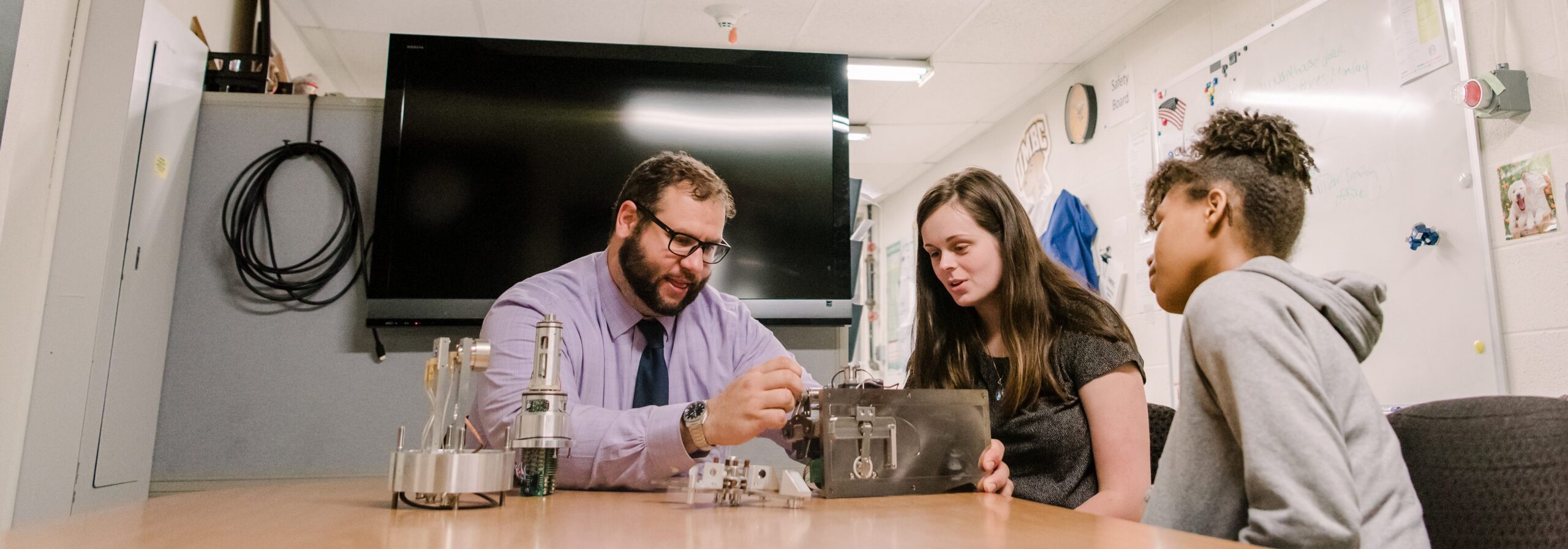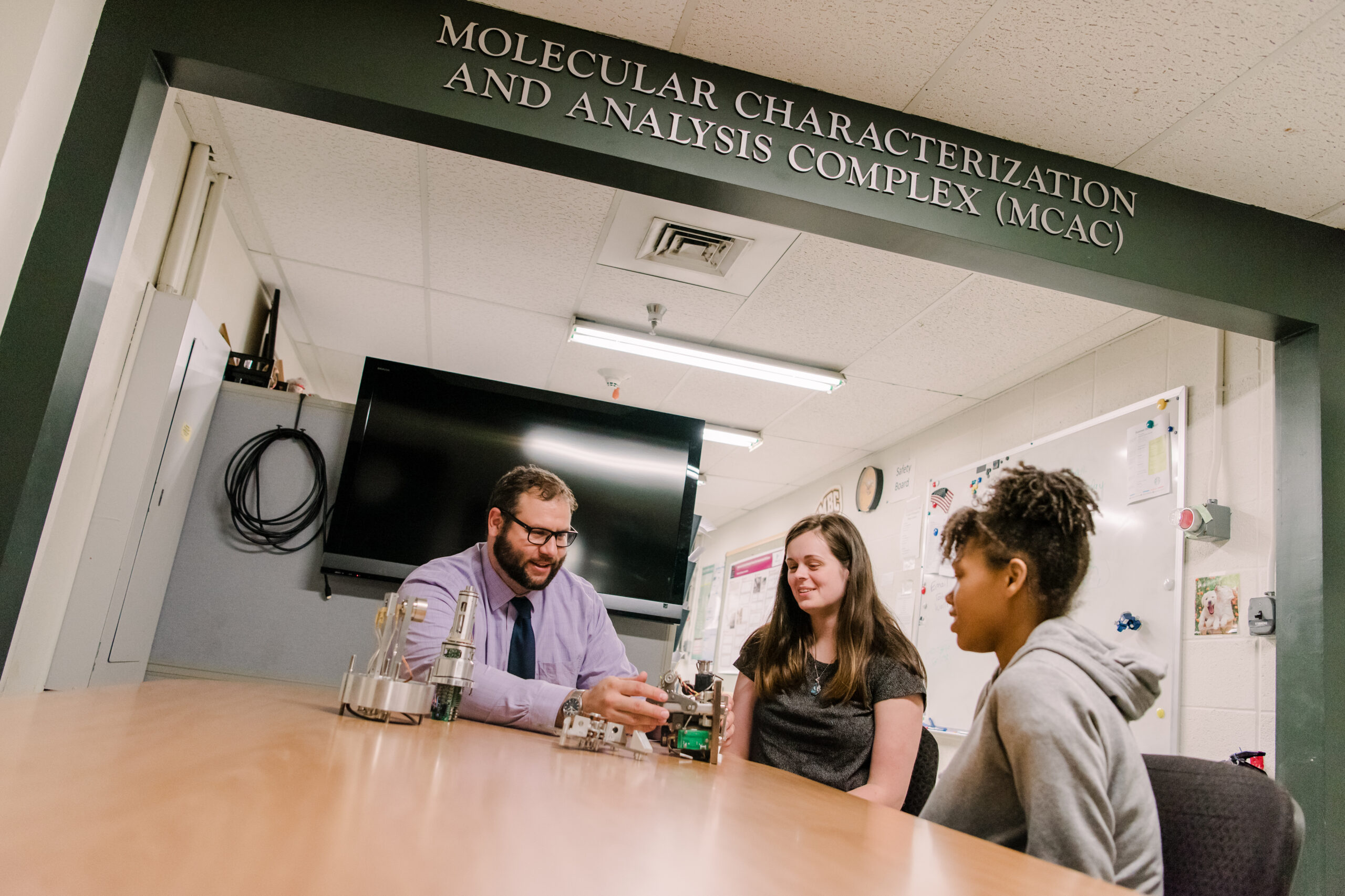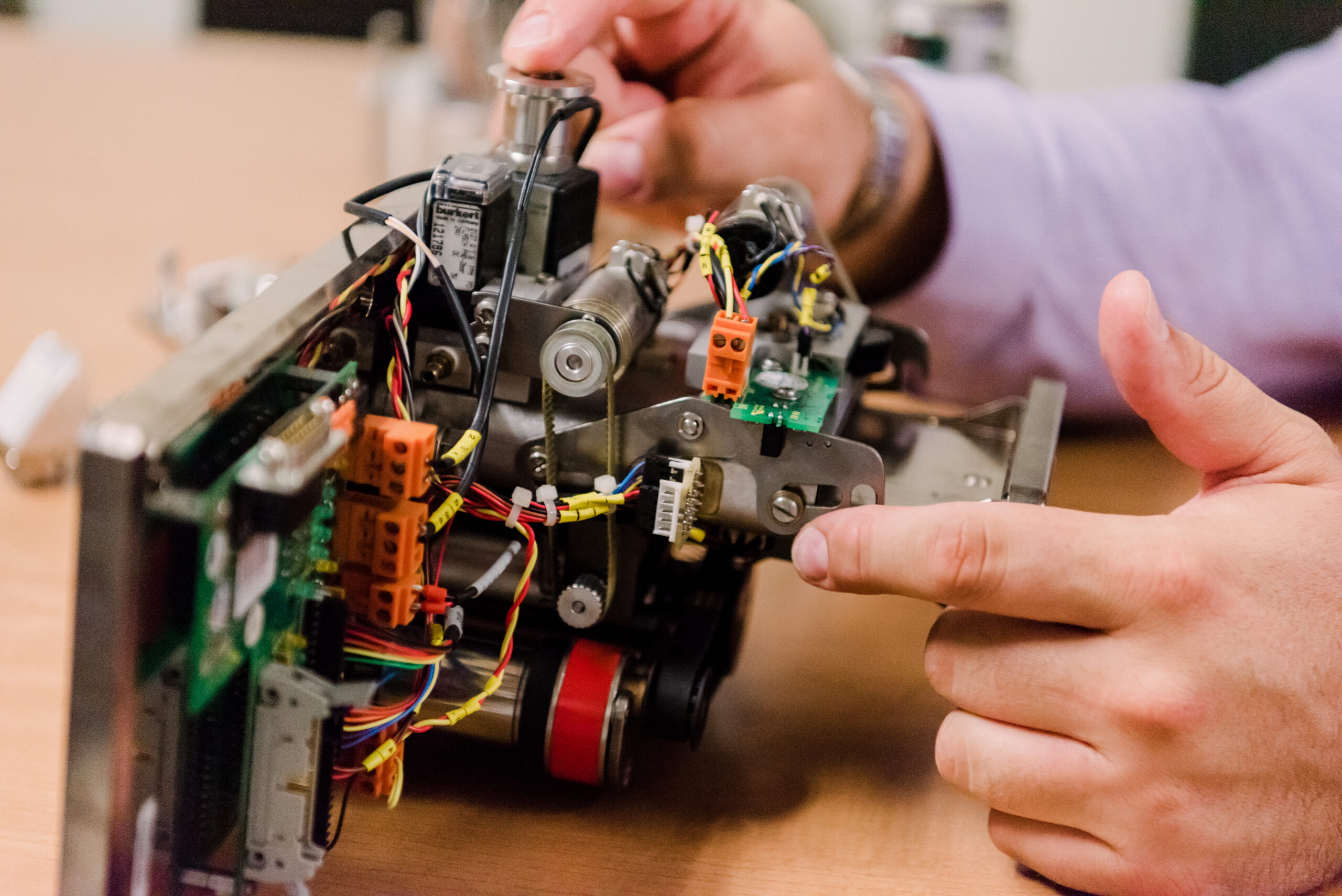Tucked away in the basement of the Meyerhoff Chemistry Building lies a hidden gem. The Molecular Characterization and Analysis Complex (MCAC) houses a group of self-proclaimed nerds analyzing chemical compounds on instruments that cost upward of a million dollars. Their manager, mentor, and friend, UMBC alumnus Joshua Wilhide M.S. ’10, chemistry, watches over the students—nudging them in the right direction when they need guidance and cracking a joke when they need a mental break.
By the time lunch rolls around, the group grabs a deck of cards and gathers at a table in the front of the lab to play a round of rummy. Before returning to the humming machines that are separating and sorting complicated chemical mixtures, the students swap stories of any ghost sightings in recent days.
“There’s a running joke that our lab is haunted by a very friendly ghost,” Wilhide chuckles. “Whenever we get new people in the lab we always ask if they believe in ghosts. Whether or not you believe, it’s a fascinating subject that we can always go back to, and we are able to bond over it.”
The profoundly welcoming work atmosphere is a feeling that Wilhide has been working to create for nearly a decade. When he started there full-time, in 2010, the MCAC was just a basement with gritty tile floors, worn down infrastructure, and three mass spectrometers. In 2019, it’s an inspirational learning environment with over 20 pieces of analytical instrumentation, and Wilhide’s home away from home.
Maryland Born and Bred
Wilhide was first introduced to what would become the MCAC in 2006, when he was an undergraduate at Stevenson University. Knowing that he wanted to become an analytical chemist, he sought out an instrumental lab for his senior capstone project and found one at UMBC. The lab allowed nearly anyone to come in and be trained on any piece of equipment, something that still holds true today at the MCAC.
“I came to UMBC and fell in love with the aspect of figuring out the unknown. It was fascinating to me that you can take a mixture of chemicals and inject it into an instrument and it will give you a unique profile of all the compounds in the chemical,” Wilhide says.
His first few years of research at UMBC included working with DNA and RNA samples and discovering how each interacted with the HIV virus. Those crucial early years gave Wilhide an in depth understanding of how to operate each instrument in the lab and taught him how to modify different instruments so that they interacted properly with the unique chemical makeup of RNA.
“I came to UMBC and fell in love with the aspect of figuring out the unknown.”
– Joshua Wilhide M.S. ’10, chemistry
After Stevenson, Wilhide was working toward his Ph.D. at UMBC when his mentor, Dan Fabris, decided to move his research to the University at Albany. Wilhide initially followed Fabris to upstate New York, but after two months, decided to return home and graduate with his master’s in chemistry at UMBC.
“The decision was difficult, but I was born and raised in Maryland, and I love my Old Bay and my crabs,” he admits. “I’m truly a Maryland boy at heart.”
Shortly after Wilhide’s graduation in 2010, the dean of UMBC’s College of Natural and Mathematical Sciences, William LaCourse, offered Wilhide a managerial position at the MCAC. Having worked intimately with the equipment for several years, LaCourse believed that Wilhide was the perfect candidate for the job.
Unique Approach to Learning
Wilhide describes the MCAC as a unique “jack of all trades” facility that works on general analytics. Other universities have core facilities that specialize in a certain subsection of analytical chemistry, which he says limits their ability to solve certain problems. On the other hand, the MCAC has more than 20 pieces of instrumentation that allow samples to be run through an instrument specially formulated for their specific molecular make-up.
One area of expertise that the lab has developed over the last several years is ambient ionization mass spectrometry. In layman’s terms, this involves Wilhide and other MCAC members building and designing a platform to test a range of unique samples (some examples of what they have tested include ink on paper, a piece of fruit, art from various museums) and determining their molecular make-up in a matter of seconds. Wilhide explains that the technology can be used to determine pesticides on foods, discover groups of chemicals in plastics, and was once even used to uncover the chemical differences between Coca-Cola and Pepsi.
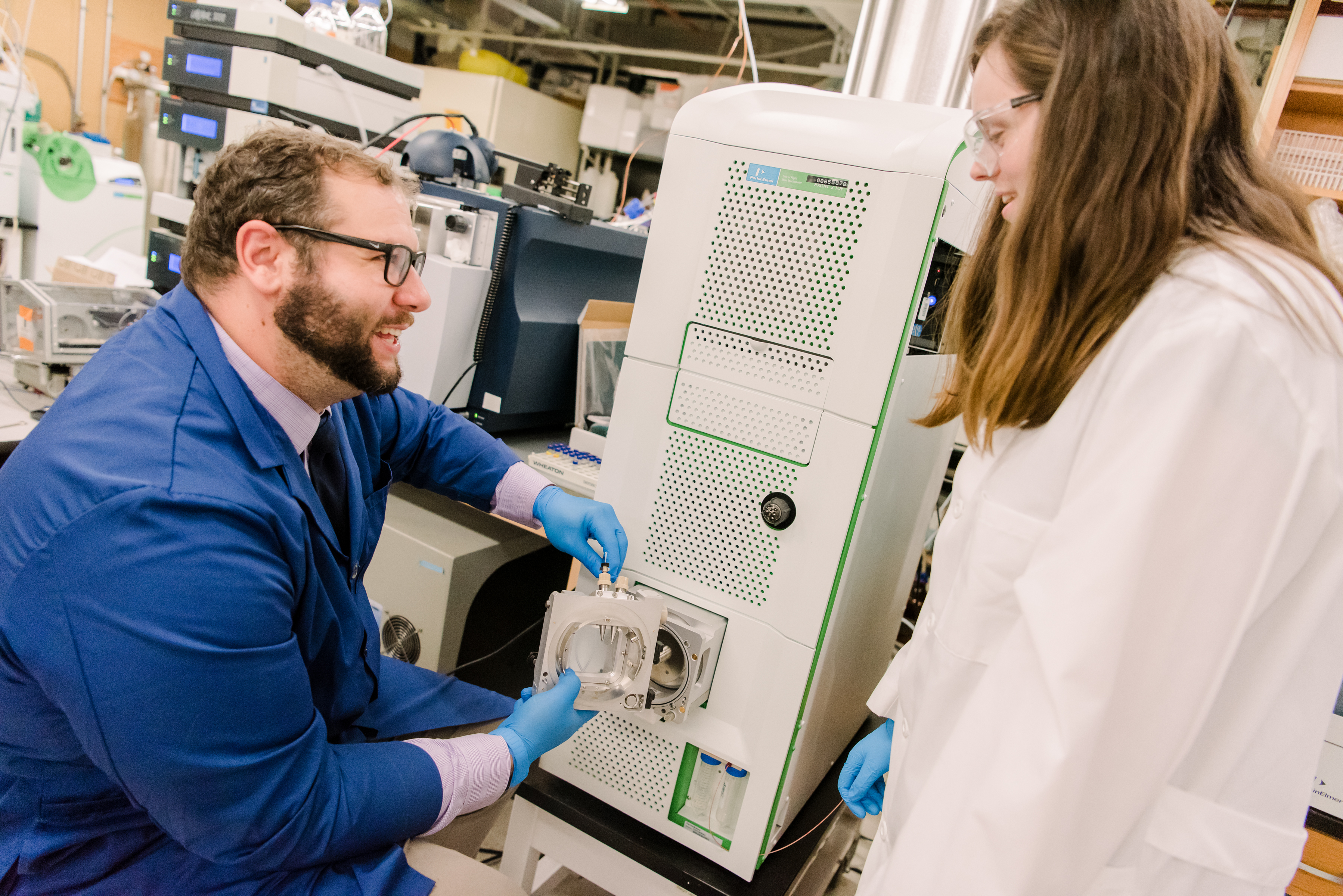
“We are processing analytical problems that other core facilities can’t analyze because they don’t have the instrumentation nor the proper analytical techniques. Because the MCAC is so diversified in personal backgrounds as well as instruments,” Wilhide explains, “we can usually find a way to solve these issues, and that’s what makes us so unique.”
And students directly benefit from the MCAC’s diverse instrumentation. Wilhide personally trains all of his undergraduates on all of the instruments, even the $2 million mass spectrometer. If a trainee breaks any instrument, Wilhide sees this as an opportunity to show them how to fix it.
Open Access Advantage
Most analytic chemistry facilities have equipment behind closed doors where samples are put in a dropbox, tested by the lab’s staff, and results are emailed to the recipient weeks later. But Wilhide takes pride in the open access aspect of the MCAC, noting that anyone can come into the lab and be trained on any instrument. Another unique feature of the lab is the opportunity for undergraduates to run samples. Not only are the students learning how to analyze the data, but they are learning to run the instrumentation, thereby increasing their skill sets and marketability in the workforce.
“That’s how we feed back into that loop of a university education,” Wilhide says. “The students have access to equipment that many people don’t have and because of that will be able to get a job almost anywhere. It’s a unique opportunity to train students from the ground up.”
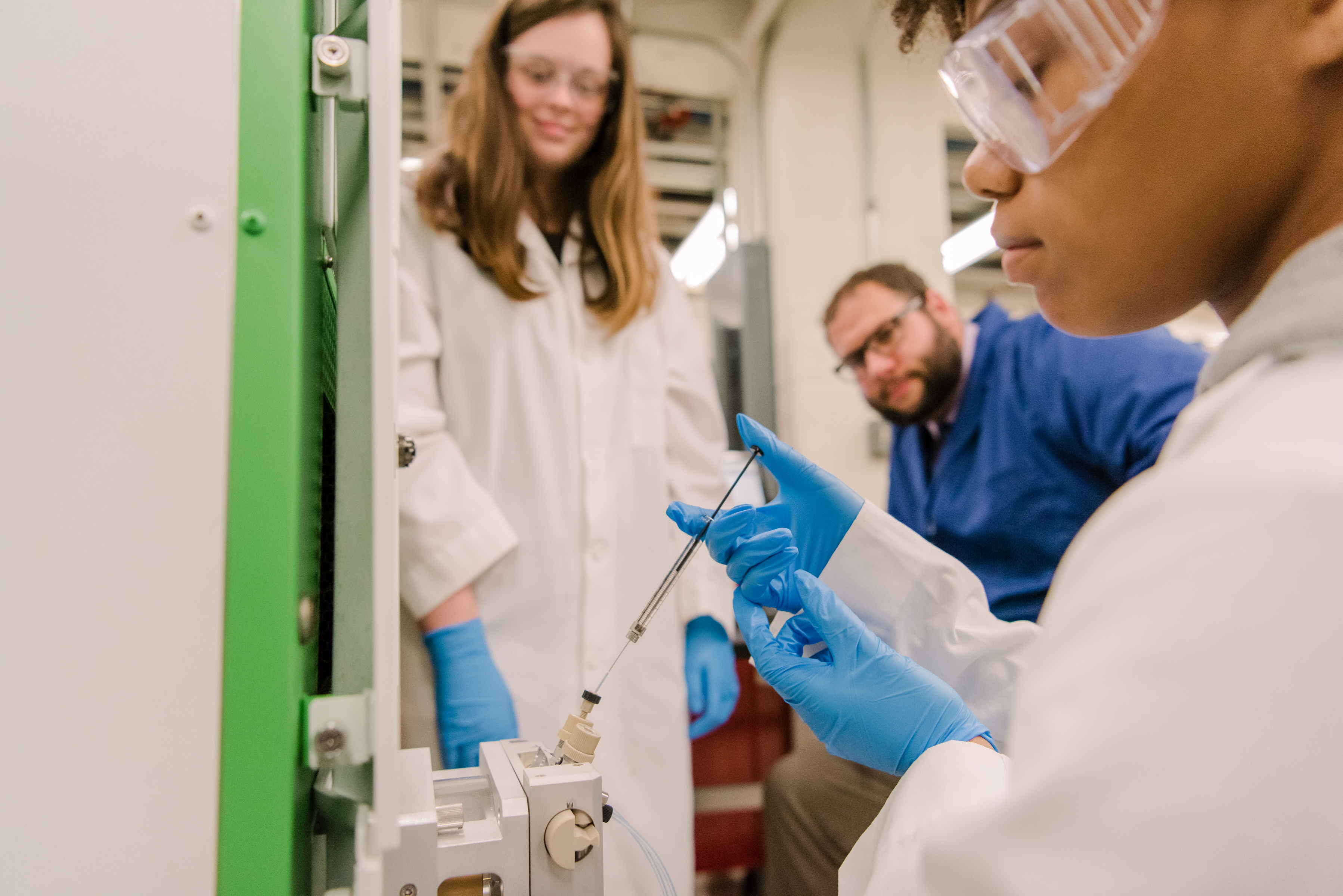
Chemistry major, Maddie Schuch ’21, currently works in the MCAC studying water quality analysis. She uses the lab’s instrumentation to detect and determine how much of a certain ion or compound is in a specific water sample, thus revealing the water quality. Her time working at the MCAC solidified her plans to pursue a Ph.D. in analytical chemistry when she graduates. Schuch notes that the fun work environment Wilhide creates has led to her ongoing success as an undergrad.
“It’s almost like having a little family here at the lab,” she says. “Josh truly cares for everyone and is very supportive—he never puts you down for not understanding something. Not only do I love the science that I get to do here, but I love the people.”
Keeping Alumni Close to Home
Wilhide is grateful that his professional odyssey brought him back to where he started: UMBC. Dean of the College of Natural and Mathematical Sciences, William LaCourse, understands the importance of keeping alumni like Wilhide on campus.
“There’s no better feeling than the joy of making room for one more member of the UMBC family,” LaCourse says. “In doing so, we are better equipped to meet our challenges and celebrate success as we deepen the inclusive excellence and community of our UMBC.”
LaCourse is impressed by how Wilhide has breathed life into the MCAC over the years. Wilhide’s commitment to growth and discovery on both a scientific and a personal level leaves a lasting impact on his students and is something that LaCourse wants to keep at UMBC.
“Alums on campus bring with them an insight into the culture of UMBC and a devotion to its mission and ethos—all of which enriches the student experience and working environment. Their loyalty and love for UMBC and all we do shines through as a beacon of inspiration for others to follow,” he says.
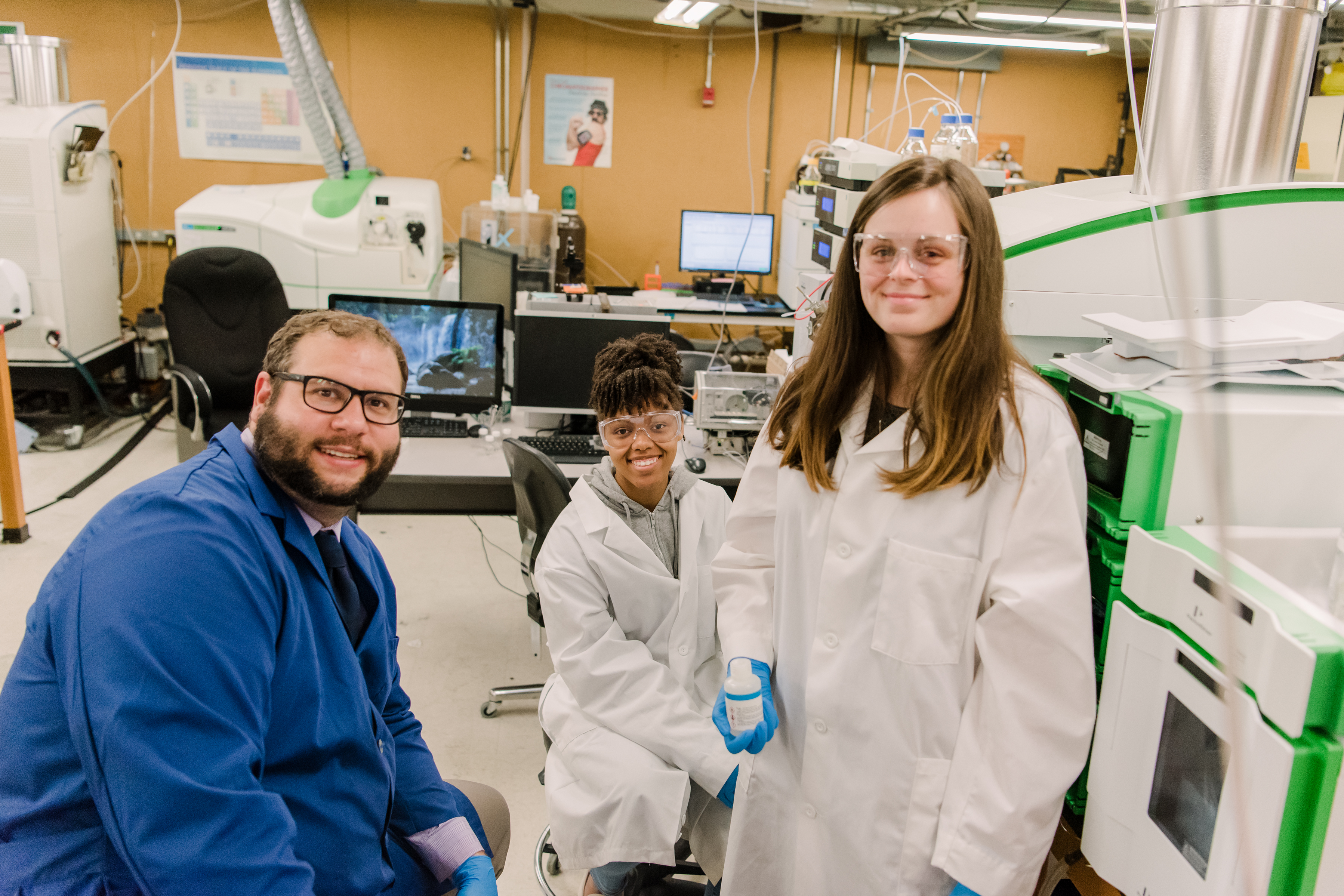
UMBC as a Cornerstone
The Maryland boy continues to stay loyal to UMBC and acknowledges how much he has grown throughout his many years working in the MCAC.
“UMBC has been an anchoring point for me. Every stage of my life, from being a rookie grad student at 21, all the way to now being married with a stable career, the university has been there for me. I see it as a home and a place to grow, all while standing on the shoulders of giants and utilizing the connections I’ve made,” Wilhide says.
Wilhide emphasized that he has grown alongside his students, too. He recalls when he was dating his future wife, students would offer him advice on proposals and engagement rings around the lunch table. Now, conversations revolve around raising his toddler.
“UMBC is a place to grow, and the MCAC is always growing… I’m always growing,” he says. “If you would’ve told me nine years ago that we were going to set up this facility, I would’ve laughed. But we took it one day at a time and look where we are now.”
The MCAC will continue expanding when the new Interdisciplinary Life Sciences Building (ILSB) opens in fall 2019. The university recently purchased a $1.3 million multiple instrument package for the ILSB, designed to expand the university’s ability to study the function of proteins and peptides. Wilhide says that these new instruments will help bring back UMBC faculty who had to use other facilities to complete their lab work. He notes that this new equipment is a big step out of their comfort zone and will bring many new challenges, but will certainly be worth it.
“That’s the thing about Josh, he loves a good challenge,” LaCourse says. “He is a brilliant scientist and an overachiever. He cares about the students and is always ready to help build the university as a whole.”
*****
Header image: Wilhide showing students a piece of a mass spectrometer
Students pictured: Shirley Wolz ’20, biochemistry, and Sanaa Jones, an incoming first year student getting a jump start on research.
All photos by Marlayna Demond ’11.
Tags: CNMS, GraduateSchool, MCAC

